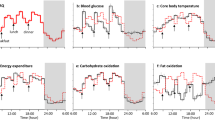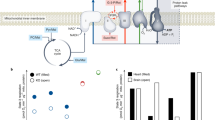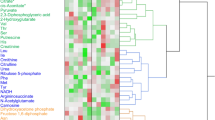Abstract
THE study of the values of the basal metabolic rate in mammals and its relation to body-weight has been the object of many papers and reviews since the middle of the nineteenth century. On the other hand, very few data are available concerning the upper limit of animal metabolism; only individual values are found in the literature concerning the maximal metabolism of some mammals and man. The incompleteness of the available data and their suitability for comparative purposes are connected with the difficulty in obtaining the state of maximal performance in animals. In addition, in many of the animals used, maximal oxygen consumption can be obtained only under simultaneous application of work and lowered temperatures, so that the working and thermoregulatory capacity of the animals are used as well. In these conditions, however, a rapid decrease of metabolism occurs as a result of cooling the animals, as I have already shown1; it is very difficult, therefore, to find out the period of greatest oxygen consumption. Nearly all the data in the literature seem to be affected by this error, and the results obtained are, therefore, probably lower than true maximal values.
This is a preview of subscription content, access via your institution
Access options
Subscribe to this journal
Receive 51 print issues and online access
$199.00 per year
only $3.90 per issue
Buy this article
- Purchase on Springer Link
- Instant access to full article PDF
Prices may be subject to local taxes which are calculated during checkout
Similar content being viewed by others
References
Jánsky, L., Physiol. Bohemoslov., 8, 464, and 472 (1959).
For example, Stotz, E., J. Biol. Chem., 131, 555 (1939). Tipton, S. R., and Nixon, W. L., Endocrinol., 39, 300 (1946).
Schneider, W. C., and Potter, V. R., J. Biol. Chem., 149, 217 (1943).
Kunkel, H. O., and Campbell, J. E., J. Biol. Chem., 198, 229 (1952). Kunkel, H. O., Spalding, J. F., de Franciscis, G., and Futrell, M. F., Amer. J. Physiol., 186, 203 (1956).
Jánsky, L., and Procházka, J., Čs. Fysiol., 9, 238 (1960).
Foustka, M., and Poláček, I., Babákova sbírka, SZdN, Praha (1960).
Author information
Authors and Affiliations
Rights and permissions
About this article
Cite this article
JÁNSKÝ, L. Total Cytochrome Oxidase Activity and its Relation to Basal and Maximal Metabolism. Nature 189, 921–922 (1961). https://doi.org/10.1038/189921a0
Issue Date:
DOI: https://doi.org/10.1038/189921a0
This article is cited by
Comments
By submitting a comment you agree to abide by our Terms and Community Guidelines. If you find something abusive or that does not comply with our terms or guidelines please flag it as inappropriate.



